How To Take Amazing Snowboard Photography
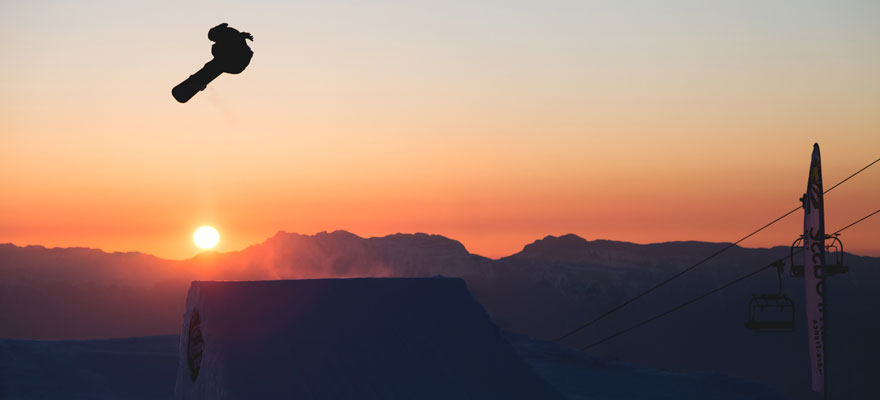
Words and Photos: James North
Bio Photo: Jamie Durham
Camera Settings
Like most, I'm sure you will want to capture both action and the awe-inspiring landscapes while you are tearing around the mountains. Both of these require different settings in order to get the best shot.
If you are just starting to play with your camera's settings outside of auto mode, then you could start by using priority modes, before going to full manual.
Action Shots

Action is fast-paced, so for this, you will need a fast shutter speed in order to freeze the action. Try putting your camera on shutter priority mode which in turn will allow you to choose a fast shutter speed and the camera will do the rest to obtain the correct exposure.
The higher the number the faster the shutter speed. In order to freeze the action, ideally, you will want to set the speed to 1/500 minimum which shouldn't be a problem as there is always lots of available light in the mountains.
Landscape Shots

With landscapes, the aperture now comes in to play as your most important setting.
When shooting landscapes, you want everything to be in focus meaning you want a great depth of field (Well, you may not due to your own artist impression). To obtain this, you will need to set your camera's aperture to a high number, for example, f16/22. This decreases the size of the aperture inside the lens which consequently increases the depth of field i.e. everything in focus.
Composition
In my opinion (and I'm sure many of others), this is the most critical element in taking a good snowboard shot.
The mainstream media portray snowboarding in a bad light and don't often retain any credibility within the industry due to the standard press photographer's approach to shooting the action.
You may have heard the term ‘guy in the sky' before…
This is a tightly cropped shot of a rider in the air with no contextual explanation of what they are actually doing.
So, big rule number one, avoid this at all costs.
Give the viewer some indication of where the rider might have come from or where they are landing. Show off the feature they are hitting and make it play a crucial part in the framing. All of this will help the viewer comprehend everything, leaving them more blown away by what the rider is doing…and, in turn, your photo.
Lastly, I like to apply the rule of thirds. A guideline which when used, can generate more interesting composition and angles. Also, as staff photographer for The Reason Snowboard Magazine, it helps create more space for our designer to work with on articles and text layouts. Something to consider if you'd like to submit your images to print or digital media.
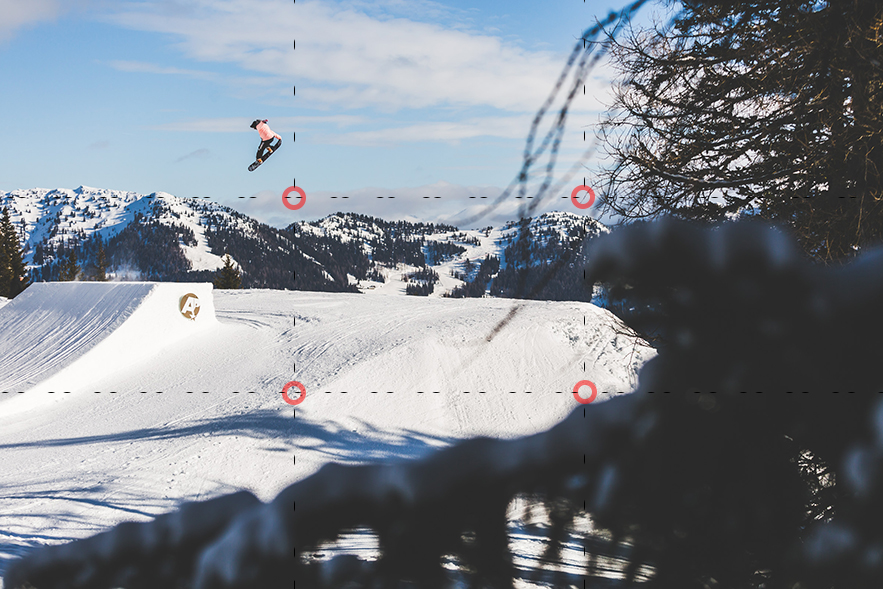
Focus
You will find your own way of tackling focus to ensure your images are sharp, so keep playing around with this one until you discover what works for you.
For me, I use autofocus mostly. I lock the focus on where the rider will be by half-pressing the shutter button or using back-button focusing. Then I simply reframe the shot and fully press the shutter when the moment comes.

Lenses
In an ideal world, you'd have a lens for every situation but this is not only a burden on your wallet but it's also a burden in weight on your back when riding around.
I do tend to carry around 3 or 4 lenses on me however one lens I'd always suggest would be a telephoto. I'm constantly carrying a 70-200mm with me as I tend to use this most frequently when shooting snowboarding.
You are often in a situation where you can be quite far away from the rider, or you need to give the rider clearance to avoid collision so this offers the most versatility.
The other lens I use a lot is a fisheye for that real close up dynamic action but this is definitely a quiver lens.
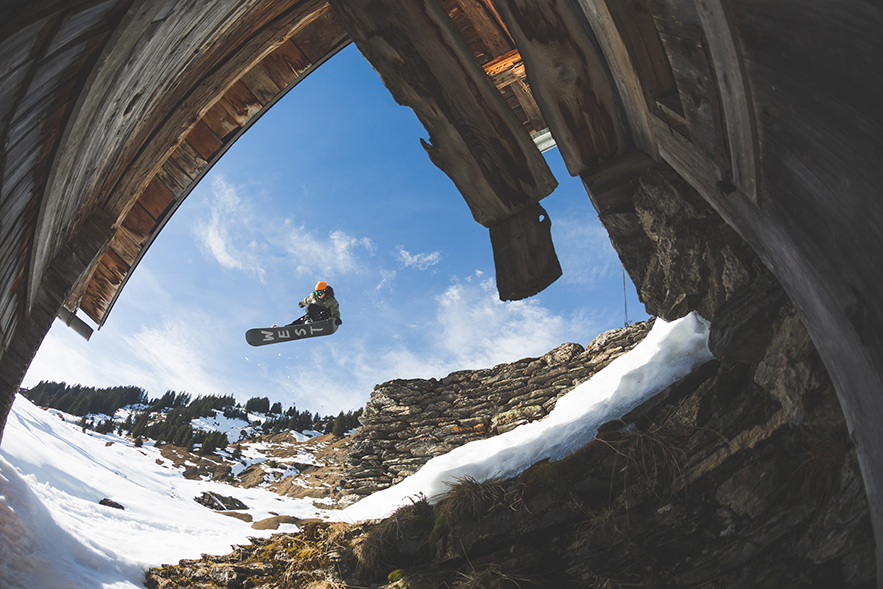
Filters
I'd suggest getting UV filters for all of your lenses, mainly for extra protection.
Good glass should be your biggest investment, not the camera body, so this filter more than anything else protects it from any scratches or wear. Shooting in the mountains can be a harsh environment so these can be a wise purchase.
Another option is a polarising filter which will help darken skies and the harsh brightness reflected from the snow. This will allow you to be less limited on creative camera controls by controlling the influx of light through the lens.
Editing
When editing, the best thing is to experiment. This will help really define your style.
I personally use Lightroom for most of my editing and then Photoshop for more technical cloning work, i.e. removing unwanted items in shot.
Firstly, get the basics right in terms of levels, contrast, saturation etc. Once you have mastered this, you can then start playing around a little more. It's open for your own creative interpretation.
One thing you have to be particularly wary of is the highlights. When exposing the image, try stopping down slightly in order to retain the highlights of which there are a lot in the snow. You can always lift them but once they are blown out, you will never retrieve them.
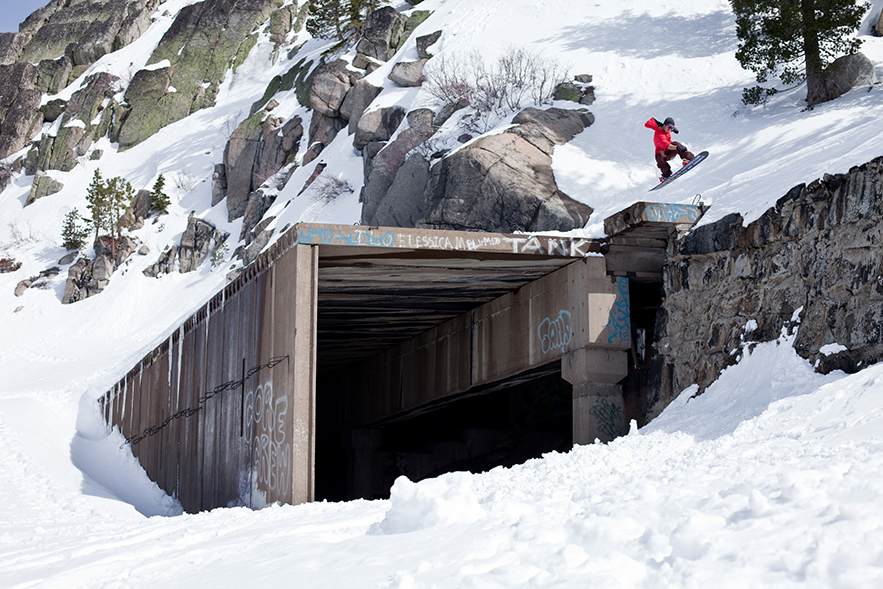
Equipment List
You will find the following in my equipment list…
- Canon 5D Mark IV
- Canon 70-200mm
- Canon 24-70mm
- Canon 16-35mm
- Canon 50mm
- Canon 15mm Fisheye
- Canon Speedlite Flash
- Elinchrom Ranger Quadra Flashes x 2
- Pocket Wizard Triggers
- Lightmeter
- Manfrotto tripods and stands
- GoPro Hero 6
- Mamiya RZ67 Medium Format + Film
- Cleaning cloths and lens pens (essential!)
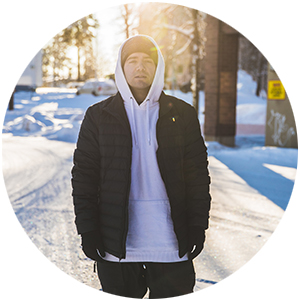 |
About the Author:James North - Professional PhotographerJames North is a portrait, lifestyle & action photographer based in London, UK. He developed his love for photography from an early age while studying the subject, shooting only with film and spending hours printing in the darkroom. James now spends his time travelling shooting campaigns for brands and agencies. James is senior photographer & assistant editor at The Reason Snowboard Magazine, the UK’s only snowboard dedicated printed publication. During the winter you will find him bouncing somewhere between London, the mountains and the cold streets of Scandinavia. Instagram:@jamesnorthphoto |



